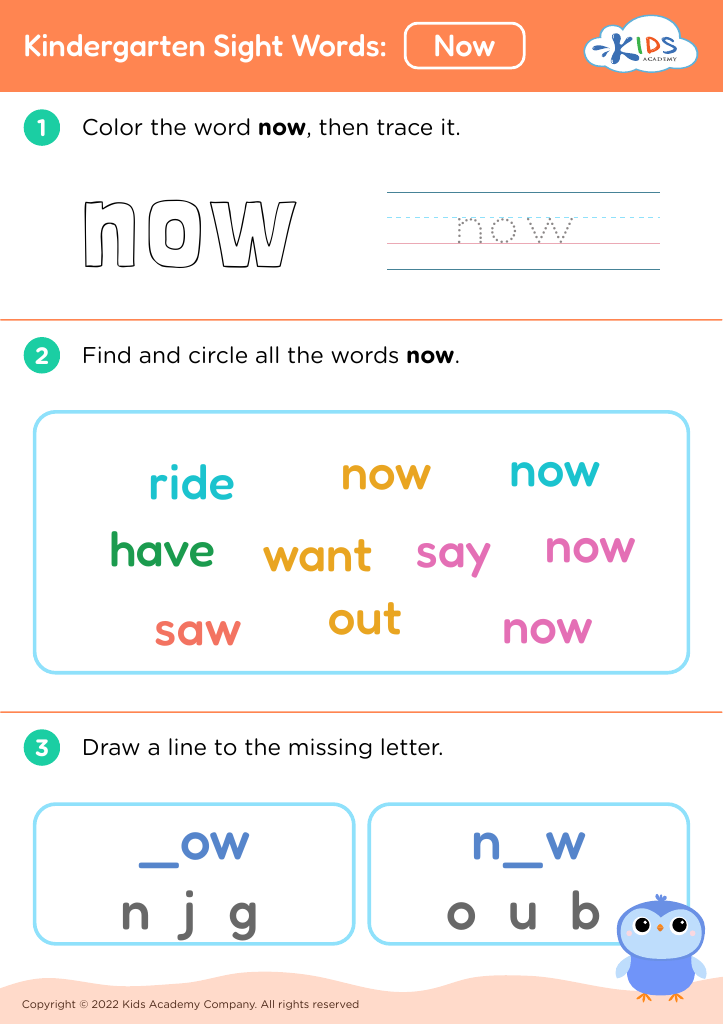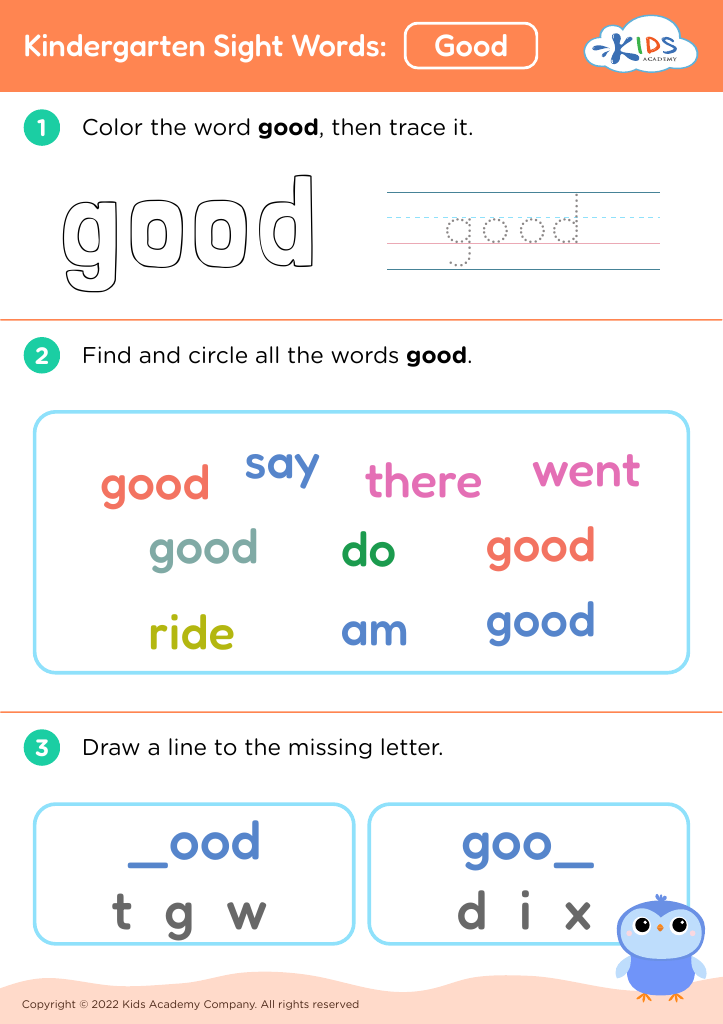Color Identification Sight Words Worksheets for Ages 4-6
3 filtered results
-
From - To
Unlock a world of vibrant learning with our Color Identification Sight Words Worksheets, designed specifically for ages 4-6! These educational worksheets blend the joys of identifying colors with essential sight word practice, boosting early literacy and cognitive skills. Perfect for preschool and kindergarten children, our fun and engaging worksheets captivate young learners as they match words to colors, enhancing their reading fluency and comprehension. Watch as your child confidently masters foundational skills through playful and interactive activities. Cultivate a love for reading and color recognition with Kids Academy’s expertly crafted worksheets.
Color identification sight words play an essential role in the early education of children aged 4-6. This fundamental component of learning offers several critical benefits that spark cognitive and pre-reading skill development. Firstly, recognizing and naming colors enhances visual literacy and discrimination skills. As children learn to identify and categorize colors, their brains develop sharper observational abilities, which are crucial for reading and understanding visual cues.
Furthermore, integrating color identification with sight words establishes foundational language skills. Learning to match words with colors helps children associate abstract symbols (letters) with concrete concepts (colors). This association not only broadens their vocabulary but also fosters early reading skills. Given that colors are a constant in a child’s environment, using them as a learning tool makes the process engaging and relatable.
Emotional and social benefits also arise from mastering color sight words. When children are able to effectively communicate about colors, they gain confidence in their ability to express themselves. This can enhance classroom participation and social interactions, facilitating smoother integration and cooperative learning.
Therefore, parents and teachers should prioritize color identification sight words to support a well-rounded, engaging, and successful early education experience. This focuses on essential cognitive, language, and social skills critical for a child's overall development.



















